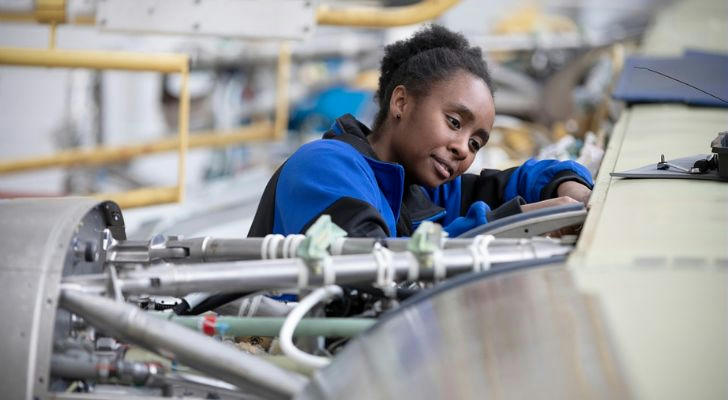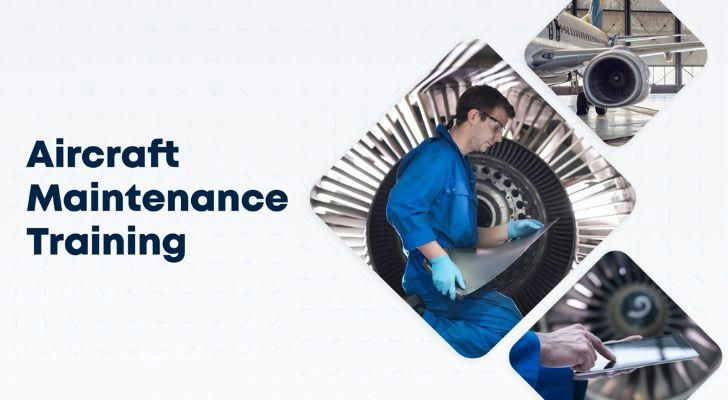Soar into a Skilled Trade: What to Know About Aviation Maintenance Training in 2025
Are you fascinated by aircraft and looking for a career that blends hands-on work with high standards of precision and safety? Aviation maintenance might be your ideal next move. Whether you’re just starting out or considering a new path, certified aviation maintenance training offers a structured, skill-focused route into a stable, respected field.
Aviation maintenance programs are designed to prepare you for essential technical roles that help keep aircraft safe and operational. These roles exist in airports, manufacturing hubs, and hangars across the country — and the need for well-trained technicians is steady and ongoing.
What Is Aviation Maintenance Training?
Aviation maintenance training prepares individuals to inspect, maintain, and repair aircraft systems. Programs often focus on both theory and practice, blending classroom learning with hands-on lab work and simulated mechanical scenarios.
A comprehensive aviation maintenance program typically leads to eligibility for FAA (Federal Aviation Administration) Airframe and Powerplant certifications, also known as A&P licenses. These credentials signal that a technician is qualified to work on most commercial aircraft components — from engines to electrical systems.
Note: FAA certification requirements vary by location and provider. Students should verify training scope and testing procedures directly with the approved school.
Core Topics You’ll Learn
Programs cover a wide range of technical content, helping students gain confidence working with complex aircraft systems. Key learning areas often include:
Aircraft Systems and Powerplants
Understand engine operation, hydraulic mechanics, and turbine systems.Airframe Structures
Learn techniques for maintaining aircraft frames, wings, and landing gear.Electrical and Avionics Systems
Get exposure to the electronics behind navigation, communication, and flight controls.Safety and Inspection Protocols
Practice pre-flight inspections, fault detection, and regulatory compliance.FAA Maintenance Standards
Study aviation laws, licensing guidelines, and required documentation procedures.
Many programs also emphasize shop safety, tool handling, and damage prevention, preparing students to meet industry standards in real-world settings.
Where to Train: Types of Aviation Maintenance Programs
Several institutions offer aviation maintenance technician training, each with different approaches and program structures:
1. FAA-Certified Technical Schools
These specialized institutions are approved under Part 147 of FAA regulations. They provide in-depth instruction, hands-on labs, and testing support. Course length varies, but most programs last between 12 and 24 months.
2. Community Colleges and Trade Schools
Many regional colleges offer associate degrees or certificates in aviation maintenance. These programs often feature partnerships with local airports or repair facilities, offering students practical experience and mentorship.
3. On-the-Job Training
Some facilities offer structured on-the-job training under the supervision of licensed mechanics. These roles may combine paid work with guided study toward certification goals.
4. Workforce Training Partnerships
Through collaborations with aviation companies or public workforce programs, students may have access to subsidized tuition, flexible class hours, or employer-sponsored training options.
Each pathway has its own benefits — some offer accelerated formats, others provide broader general education. Consider your career goals, location, and availability when choosing the right program.

What Happens After Training?
Once you complete your aviation maintenance coursework, your next step is taking the required FAA exams. These typically include:
- Written Knowledge Tests (Airframe, Powerplant, or both)
- Oral & Practical Examinations administered by certified FAA Designated Mechanics Examiners
After passing, you become eligible to work as a certified Aviation Maintenance Technician. From there, career opportunities may include:
- General Aviation Maintenance: Working on small aircraft at regional airports
- Commercial Airline Maintenance: Supporting passenger fleets at major hubs
- Avionics Specialization: Focusing on electronic systems like radar, navigation, and communication
- Component Overhaul Technician: Rebuilding engines, brakes, or control surfaces in shop environments
- Aircraft Manufacturing Support: Assisting in final assembly or quality assurance
Over time, experienced technicians can explore supervisory positions, quality control roles, or even transition into instructor or safety inspection careers.
What Makes This a Good Career Path?
Aviation maintenance suits individuals who:
- Enjoy technical problem-solving and mechanical systems
- Are detail-oriented and safety-conscious
- Prefer structured tasks and clear responsibilities
- Want to work in a professional, regulated environment
- Value stability, routine, and hands-on work over desk-bound jobs
Additionally, aviation maintenance jobs exist in both urban and regional locations, offering flexibility in where you can live and work.
Application Steps: How to Get Started
If you’re ready to begin your aviation training journey, here’s a quick checklist:
Research Certified Schools Near You
Look for FAA Part 147–approved programs or community colleges offering relevant courses.Check Entry Requirements
Most programs require a high school diploma or equivalent and a valid photo ID. Some may ask for math or mechanical aptitude testing.Request Program Details
Contact the school directly for information about costs, schedules, hands-on labs, and enrollment deadlines.Prepare Physically and Mentally
Be ready for both classroom instruction and physical tasks like lifting, tool use, and working in confined spaces.Enroll and Begin Training
Many schools offer multiple start dates per year, so you can begin when it fits your schedule.

Final Thoughts
Aviation maintenance is more than just a job — it’s a highly respected trade that supports a global industry. Certified training offers the skills, structure, and credentials needed to enter a field that values precision, safety, and discipline.
If you’re looking for a career that’s grounded in technical knowledge and powered by real-world application, aviation maintenance training in 2025 could be your next step.
